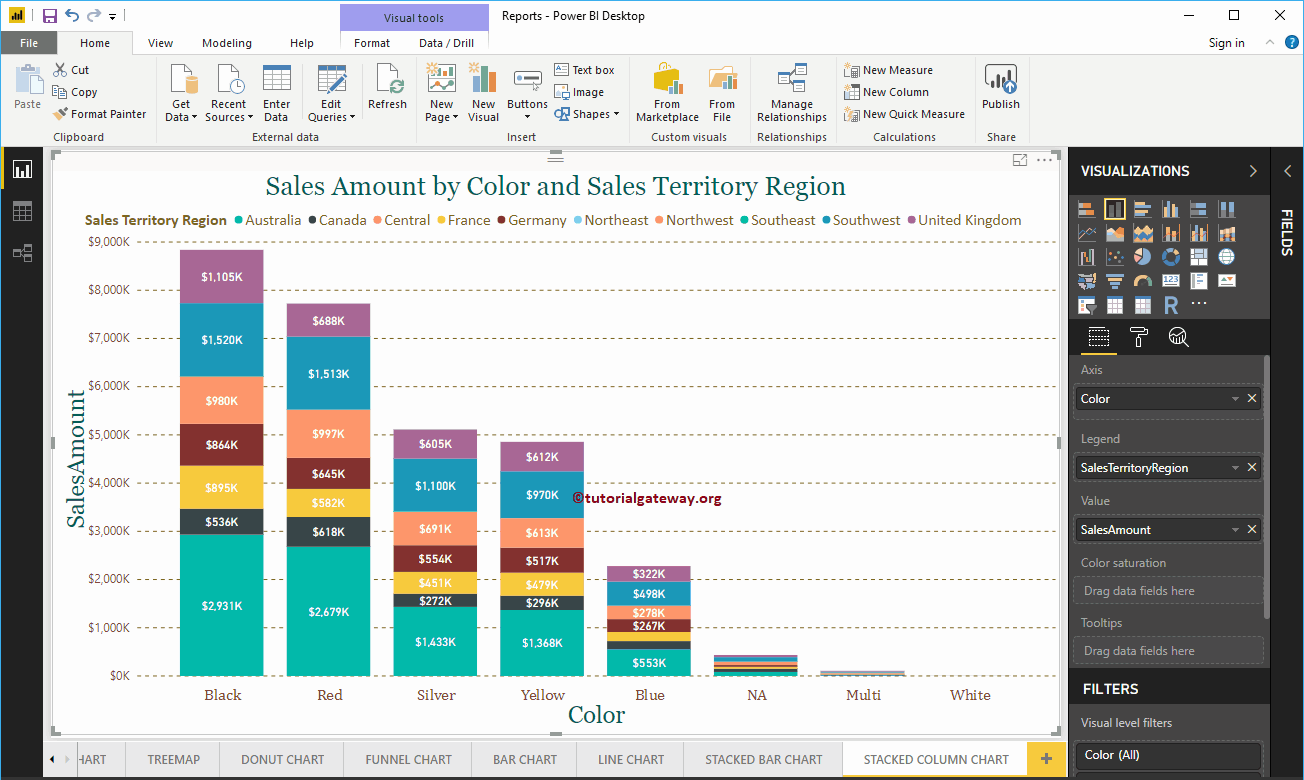Power BI Stacked Column Chart is useful to visualize multiple dimensions against a single measure. Let me show you how to Create a Stacked Column Chart with an example.
For this Power BI Stacked Column Chart demonstration, we will use the SQL Data Source we created in our previous article. So, Please refer to the Connect to SQL Server and the List of Charts article to understand the Data Source in Power BI.
How to Create a Stacked Column Chart in Power BI
To create a Stacked Column Chart in Power BI, drag and Drop the Sales Amount from the Fields section to the Canvas region. It automatically creates a Column Chart.
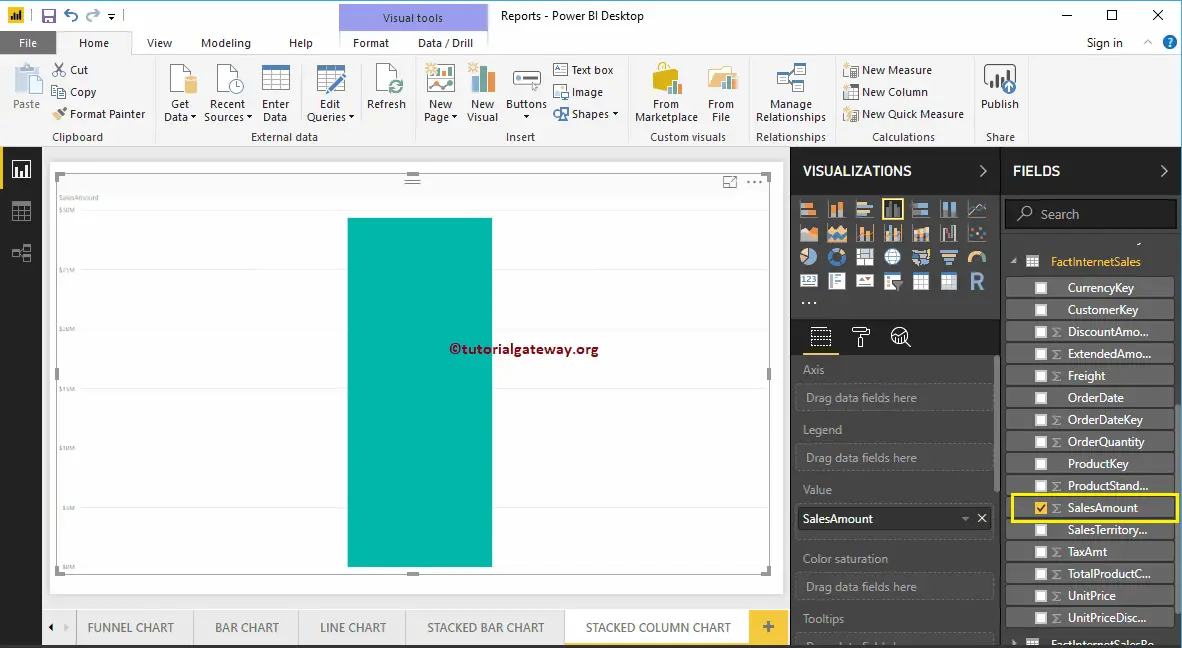
Clicking the Stacked Column Chart under the Visualization section automatically converts the Column Chart into a Stacked Column Chart.
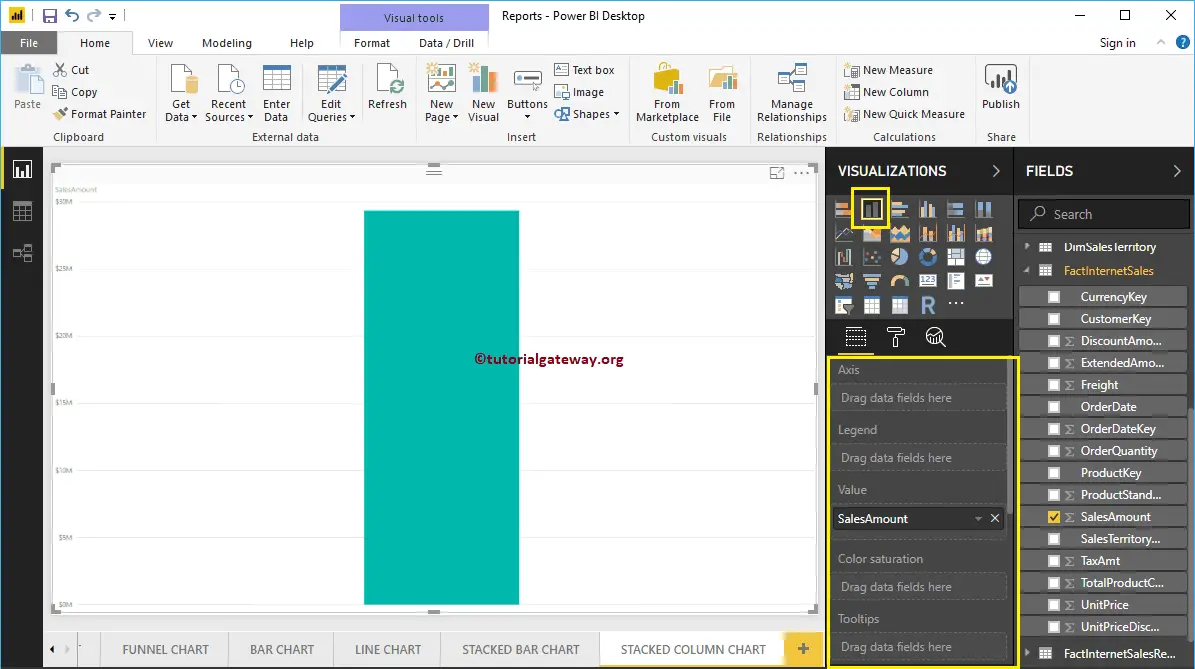
Next, let me add Color to the Axis section to create a Column chart that shows the Sales Amount by Color.
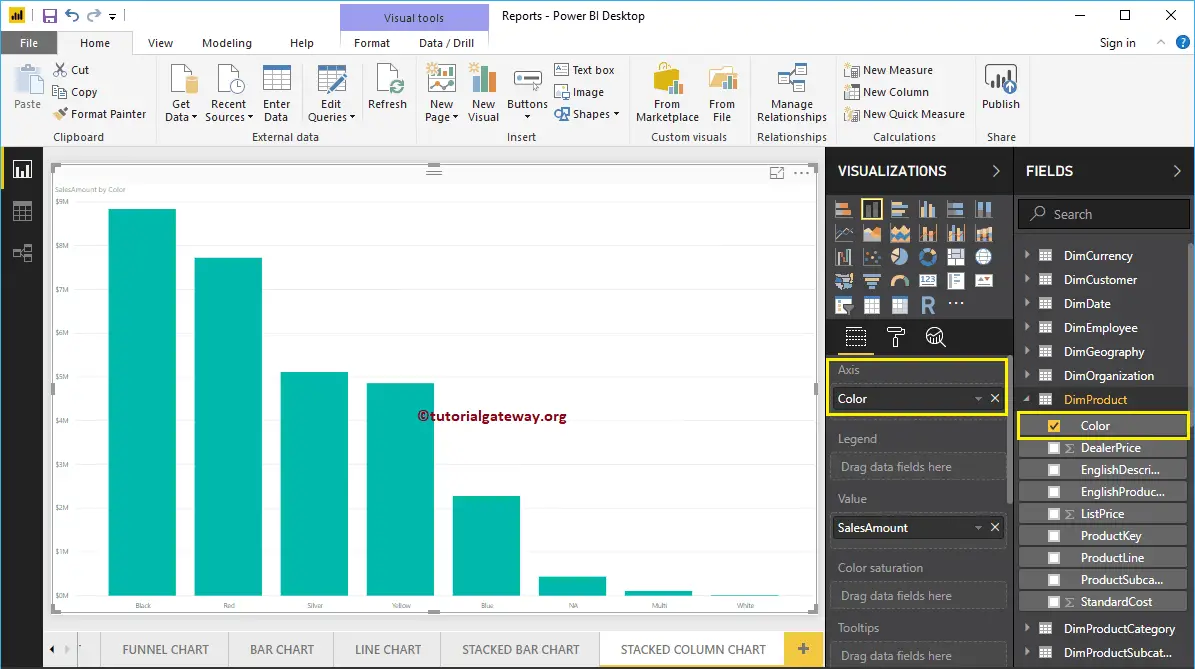
Next, we add the Sales Territory Region Name to the Legend section to convert it into the Stacked Column Chart.
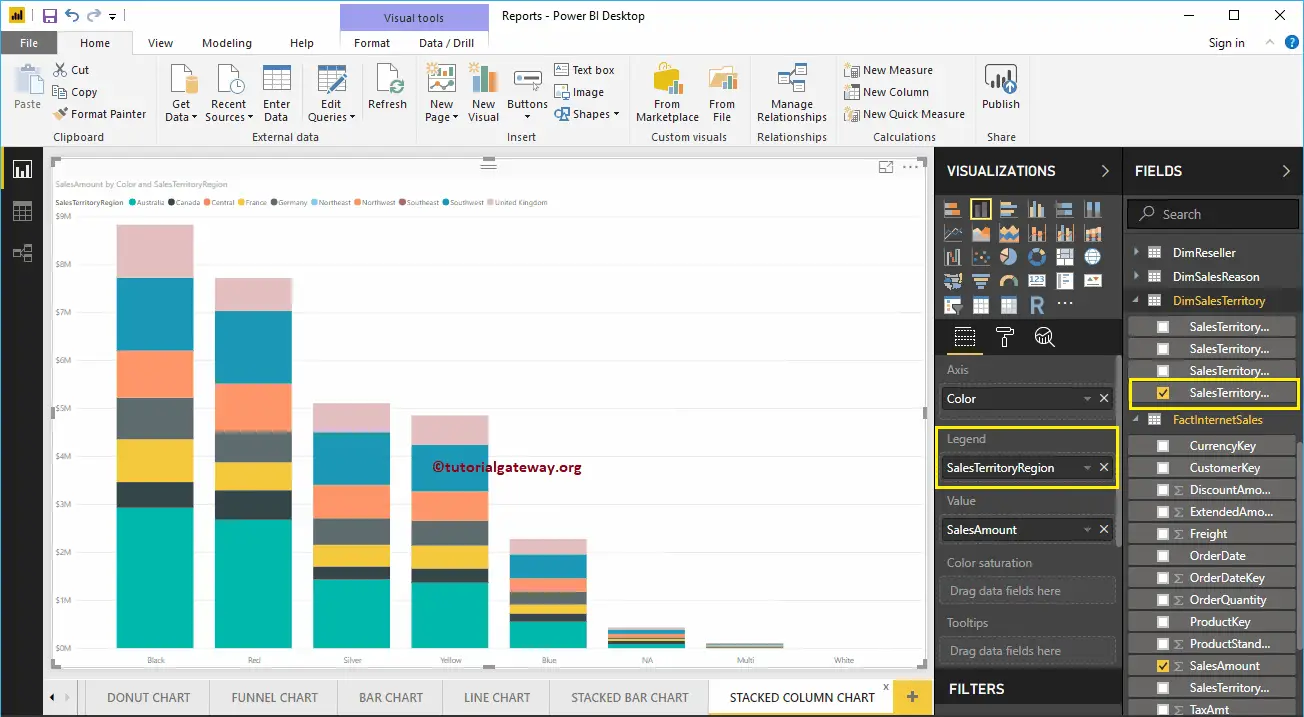
Hovering over any section of a vertical bar shows the Tool-tip of Territory, Color, and its Sales Amount.
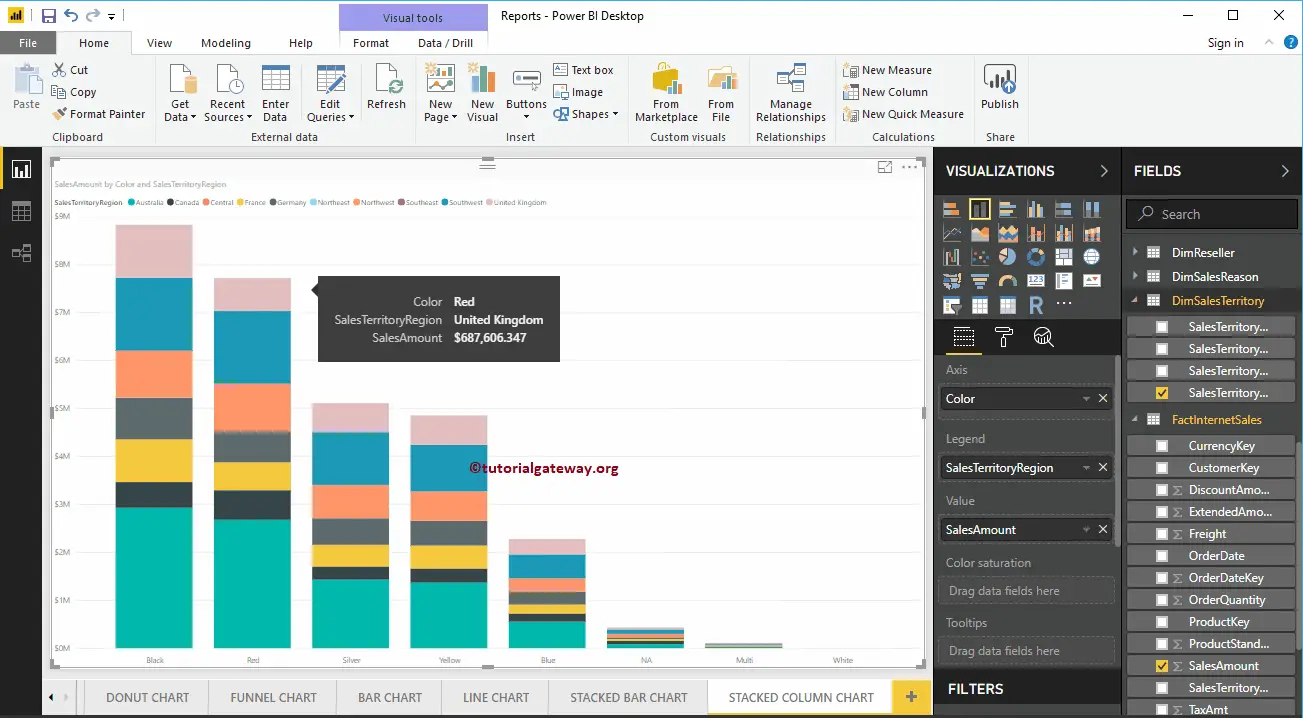
We replaced the Color with the State Province Name in the Axis Section this time. From the screenshot below, you can see that the Territory Region Name is acting as the Bar Color. You can’t group the Territory inside a State ( State Name Inherited from Territory).
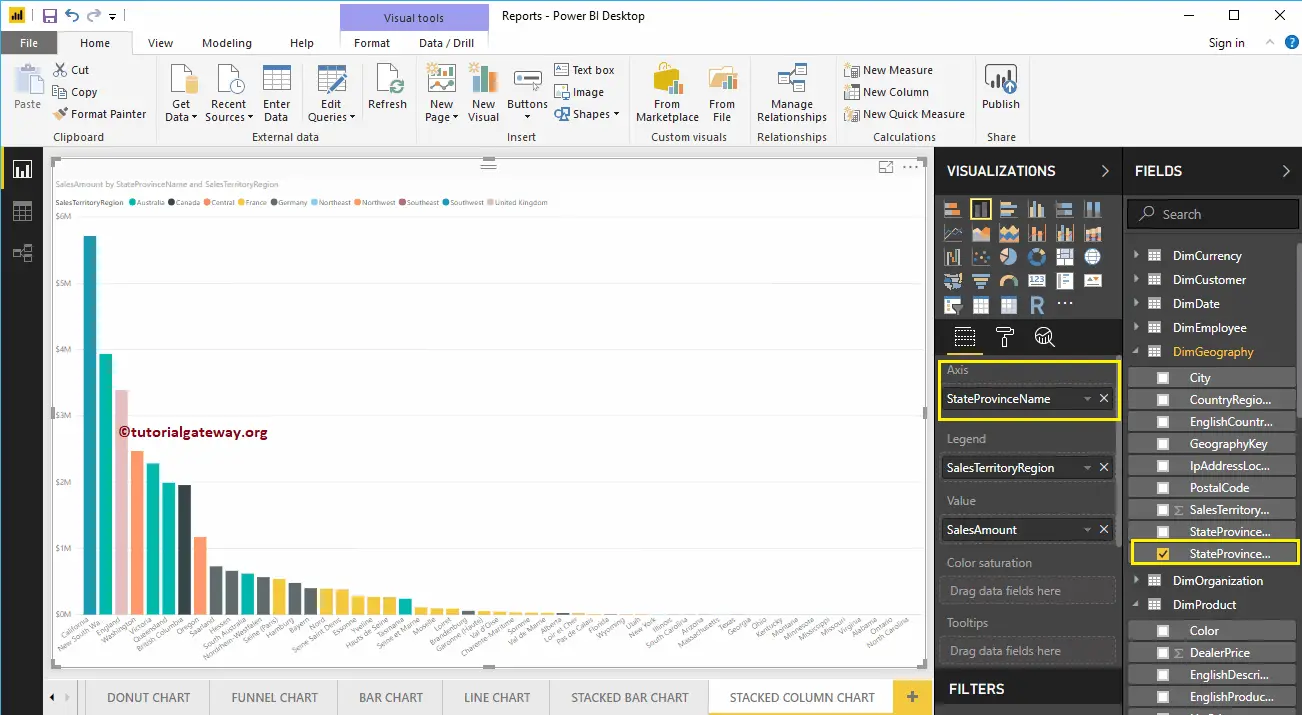
Hovering over any vertical bar shows the State Name, Territory Tool-tip, and Sales Amount.
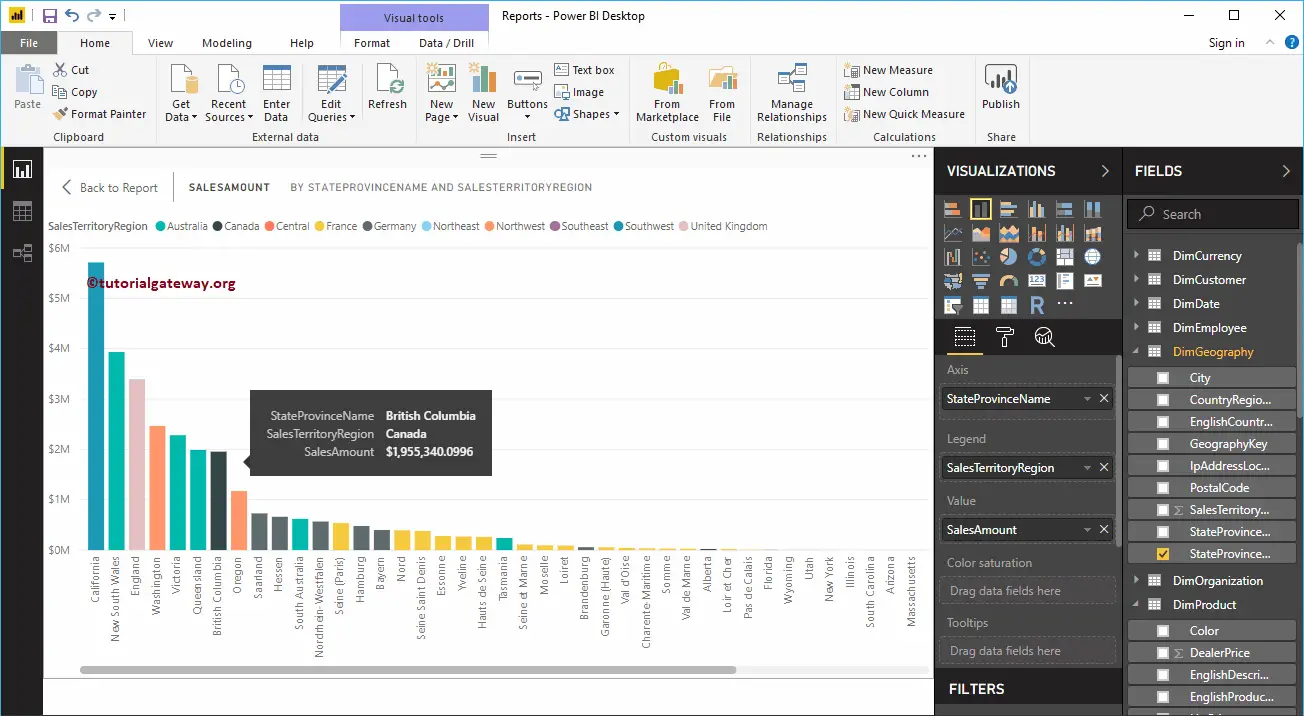
Create a Stacked Column Chart in Power BI Approach 2
First, click on the Stacked Column Chart under the Visualization section. It creates a Stacked Column Chart with dummy data.
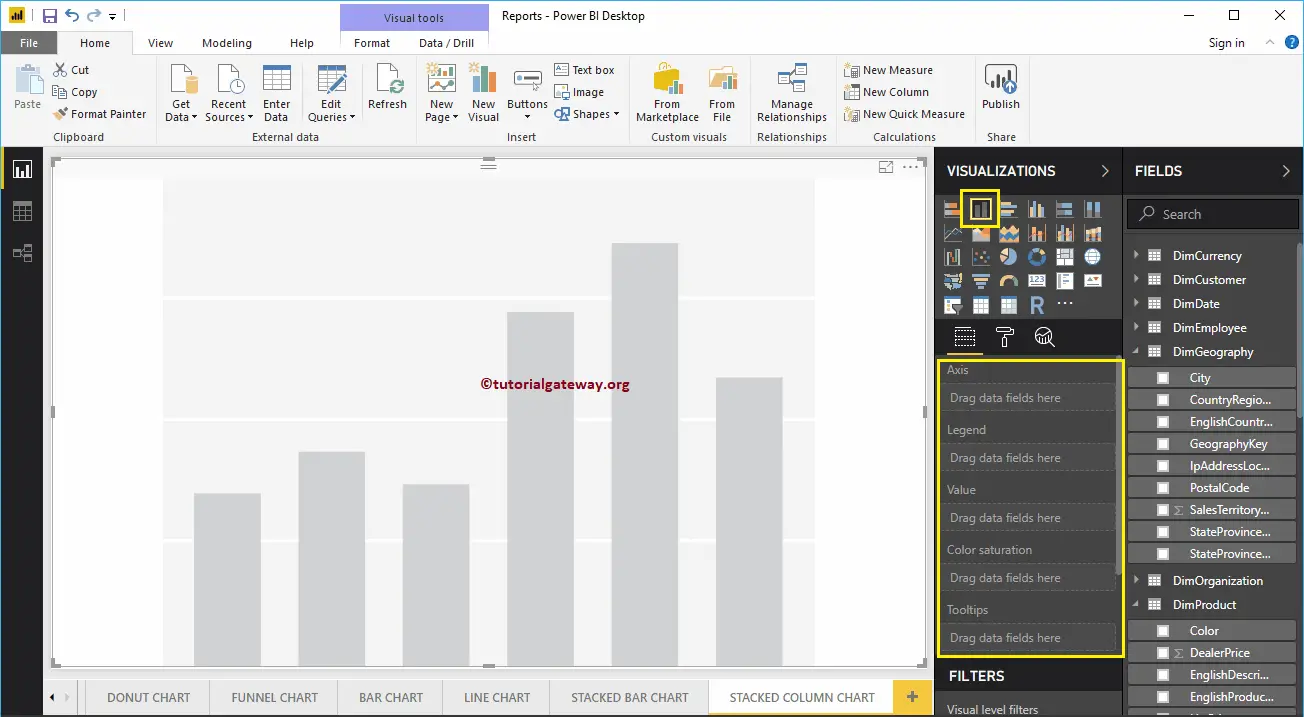
To add data to the Power BI Stacked Column Chart, we have to add the required fields:
- Axis: Please specify the Column that represents the Vertical Bars.
- Legend: Specify the Column to divide the Vertical Bars.
- Values: Any Numeric value such as sales amount, Total Sales, etc.
Let me drag the Sales Amount from the Fields section to the Values field and the Color field to the Axis Section.
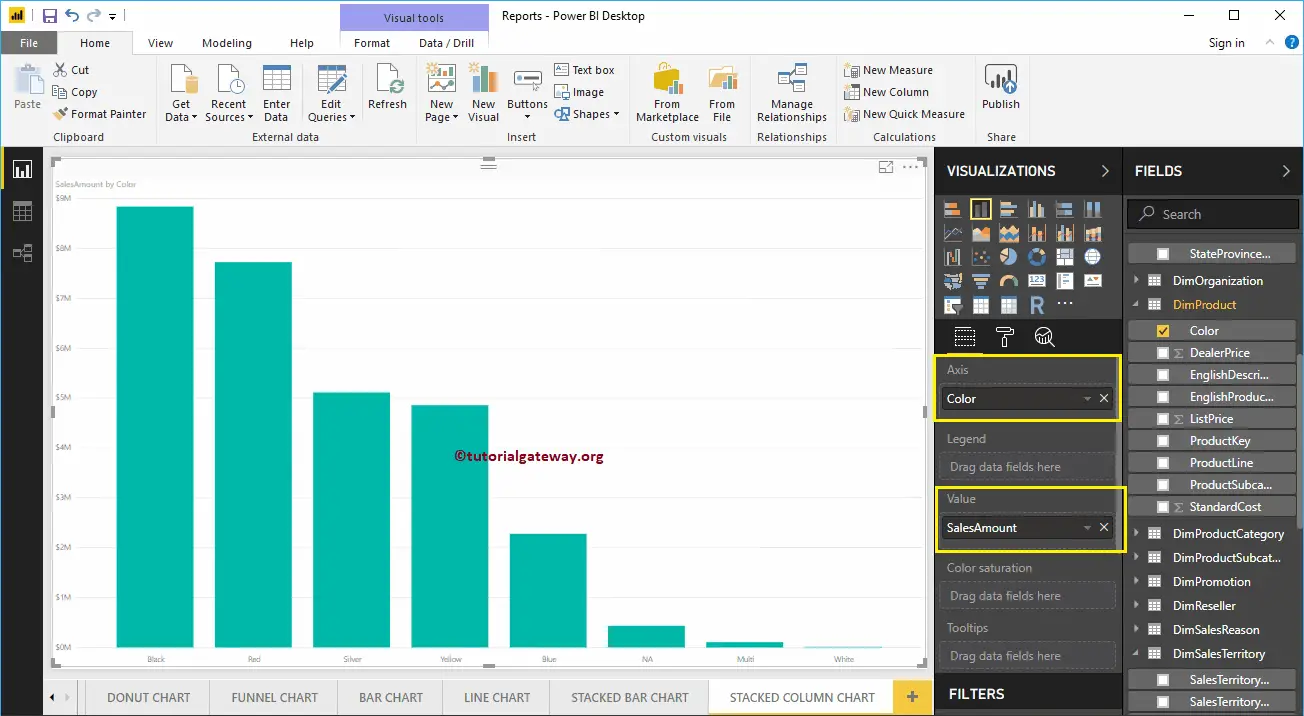
Next, add the Sales Territory Region Name from the DimSalesTerritory table to the Legend section. You can do this by dragging Territory to the Legend section or simply checkmark the Sales Territory Region Name column.
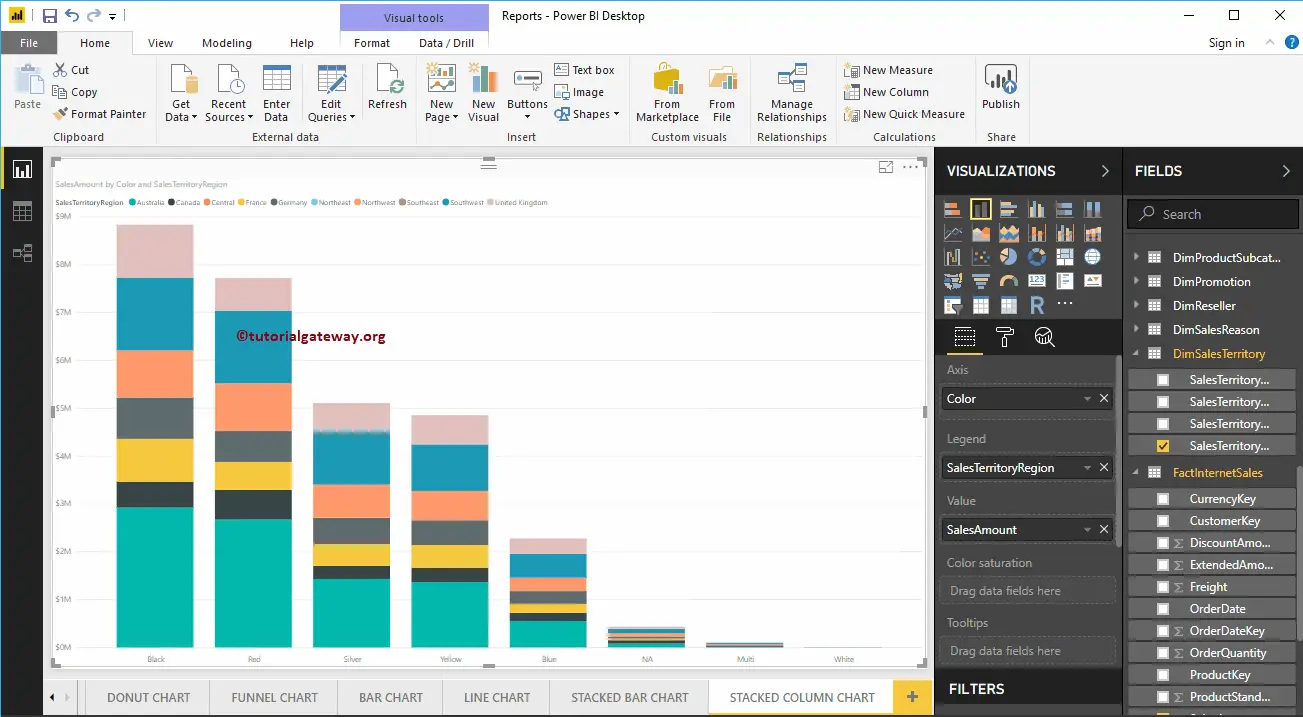
Let me do some quick formatting to this Stacked Column Chart
NOTE: I suggest you refer to the Format Stacked Column Chart article to understand the steps involved in formatting the Stacked Column Colors, Title, etc.
